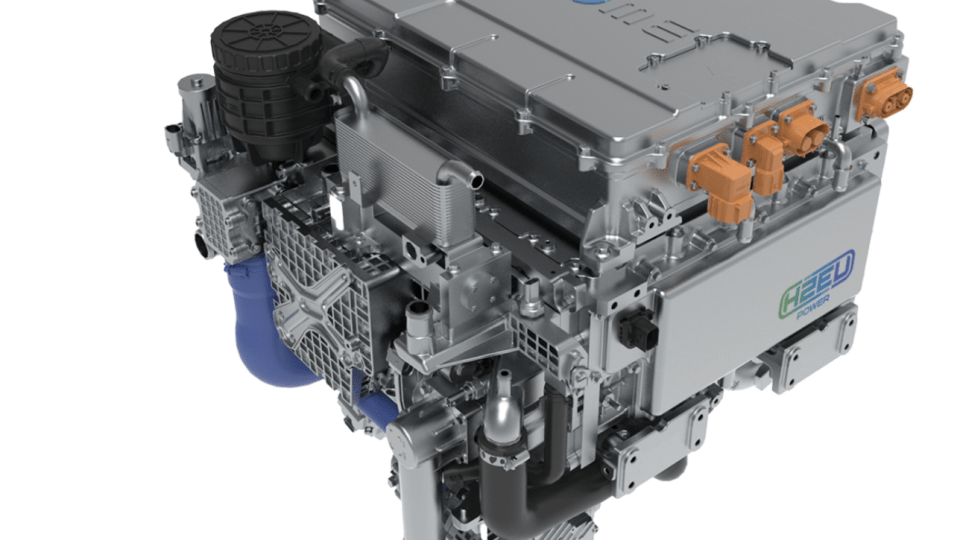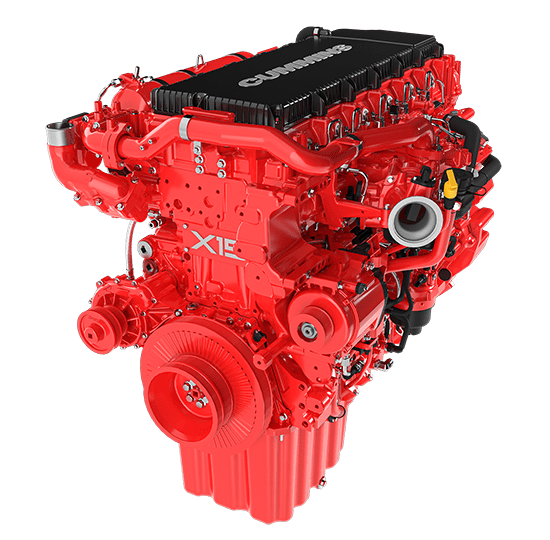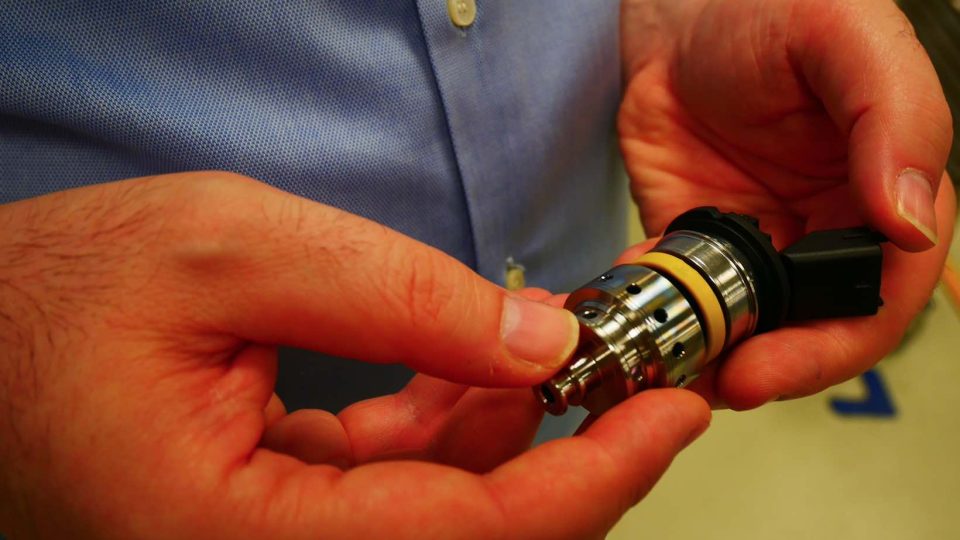48V cars. They’ll double in 5 years
Will the 48V cars be the protagonists of the decade? 48V cars. We’ve talked about it several times: call it micro-hybrid, mild-hybrid, light-hybrid or whatever you prefer, but the 48 Volt power supply is the shortest and most applicable way of the mix between ICE and power supply. BorgWarner and SEG Automotive pioneering this […]
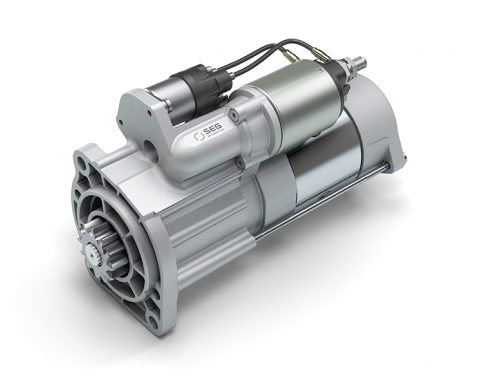
Will the 48V cars be the protagonists of the decade?
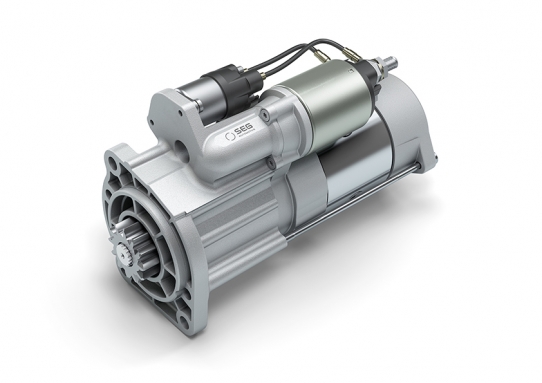
48V cars. We’ve talked about it several times: call it micro-hybrid, mild-hybrid, light-hybrid or whatever you prefer, but the 48 Volt power supply is the shortest and most applicable way of the mix between ICE and power supply. BorgWarner and SEG Automotive pioneering this technology, now it seems that many people want to follow it. We propose a report by SEG Automotive on the prospects for the spread of 48V technology among car passengers. This company emerged from the Bosch Starter Motors & Generators division in January 2018.
«Only over the last year, the first 48V cars became commercially available from brands like BMW and Daimler in the luxury car sector. This technology transforms any conventional internal combustion engine into an efficient mild-hybrid with minimal effort: by replacing the 12V generator with a 48V machine, fuel consumption and CO2 emissions are reduced by up to 15%. Over the next years, the 48V technology is forecast to quickly spread to more OEMs and different market segments, achieving a global market share of 20% by 2025 – twice as much as battery electric cars (10%). China (32% market share in 2025) and Europe (36% market share in 2025) will be the leaders for this technology, with the US expected to mirror this fast growth with a delay of a few years. This has an immediate impact on climate protection: the projected 20 mil. cars produced with 48V technology in 2025 alone are set to save a total of over 30 bn. liters of fuel and more than 70 mil. tons of CO2 over their lifecycle compared to conventional combustion engines. For comparison, the total CO2 emissions of Germany in 2018 amounted to 760 mil. tons.
Start and stop
As a highly cost efficient-way to reduce fuel consumption by around 8%, start/stop has continously expanded its market penetration across the globe. This year alone, over 45 mil. cars will be produced with a start/stop system – saving a total of 36 bn. liters of fuel over their lifetime. Compared to conventional cars, this equals over 84 mil. tons of prevented CO2 emissions. As the market share of combustion engines slowly declines with the rise of 48V and electric vehicles, 12V cars without start/stop will go virtually extinct. In Germany for example, in 2018 already 97% of newly produced cars with a combustion engine featured a start/stop system. The development of powertrain market shares varies greatly between global key markets. This is caused by large differences in regards to topics like legislation, energy mix and maturity of the respective markets.
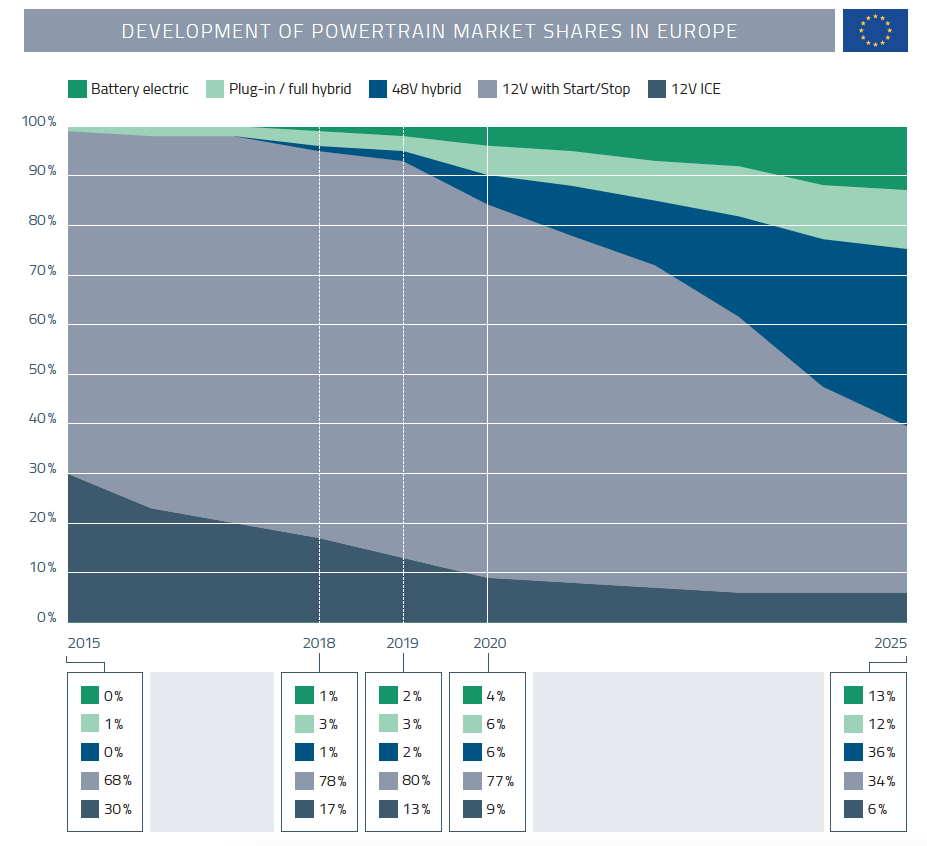
The European market has traditionally been first in adopting new technologies such as start/stop and is is now set to become a leader for 48V as well with a market share of 36% in 2025. Conversely, full electric vehicles will gain market share slower than in China, reaching only 13% by 2025. Germany in particular is at the head of this trend, with 48V expected to make up almost half of the market by 2025 (47%) and battery electric cars growing to 19% market share by then. Impacted by the current slowdown in the automotive industry, the European car market will grow only slightly, with total production expected to reach 22.3 mil. in 2025, up from 22.0 mil. in 2018.
48V cars and the Chinese market
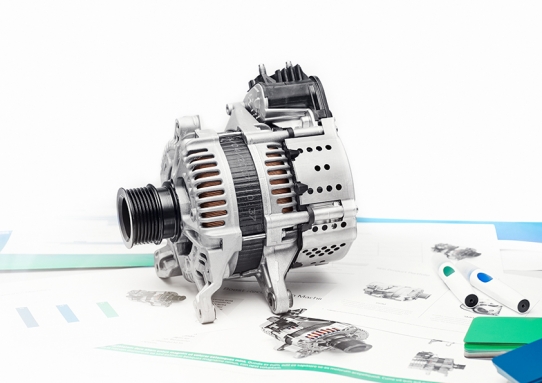
In previous times, China used to lag a few years behind Europe with introducing new technologies such as start/stop, which will reach over 50% market share for the first time in 2019. Now China has developed into a key market for EVs – with a higher market share in 2018 (3%) and projected for 2025 (16%) than the US or even Europe. Similarly, China will also quickly roll out the 48V technology, reaching a market share of 32% by 2025. The roughly 10 mil. 48V vehicles assembled in China in 2025 alone will save over 14 bn. liters of fuel and over 33 mil. tons of CO2 over their lifecyle compared to conventional ICE cars. Car sales in 2019 will be lower than last year – current projections put the total production in 2019 at 24.3 mil., down from 26.6 mil. in 2018. Over the next years, the market will not only achieve previous numbers, but experience further growth: the overall car production in China is expected to reach 30.6 mil. by 2025.
And the US market
While the US has often been the driving force behind major changes in the automotive industry, market penetration of new technologies tends to develop slower in this market. Start/stop, for example, was met with initial scepticism from consumers. In 2018, the market penetration was 38%. This year, for the first time more than half of newly produced cars will be equipped with the technology – 5.4 mil. cars in total. Compared to cars without start/stop, they will save over 4 bn. liters of fuel and almost 10 mil. tons of CO2. By 2025, 5 out of 6 conventional 12V cars produced in the US will feature at least start/stop. EVs and 48V will similarly be slower at gaining an initial foothold in this market. They are expected to only reach 10% (EVs) and 7% (48V) market share by 2025, respectively. As a whole, the North American car market is plateauing, with production forcast to be roughly the same in 2025 as in 2018 with around 17 mil. cars each.»





